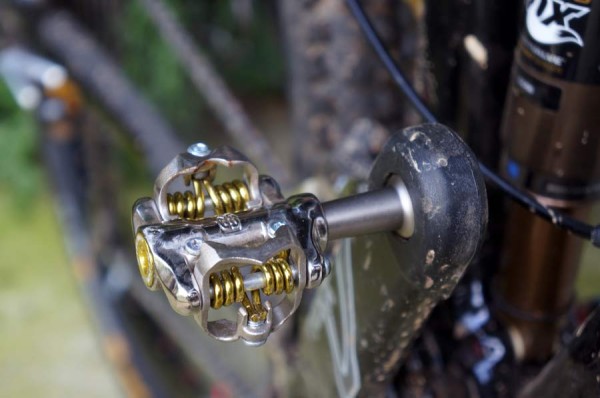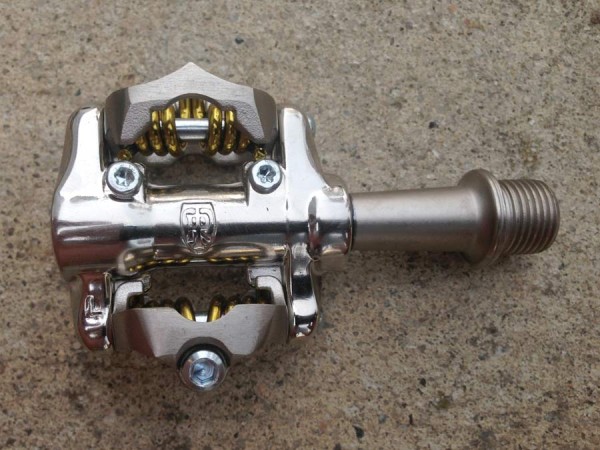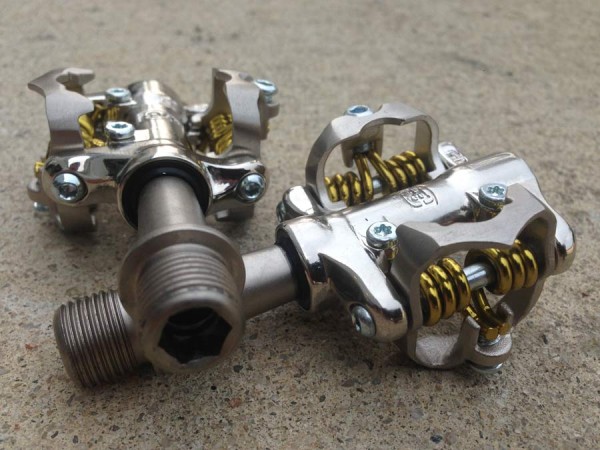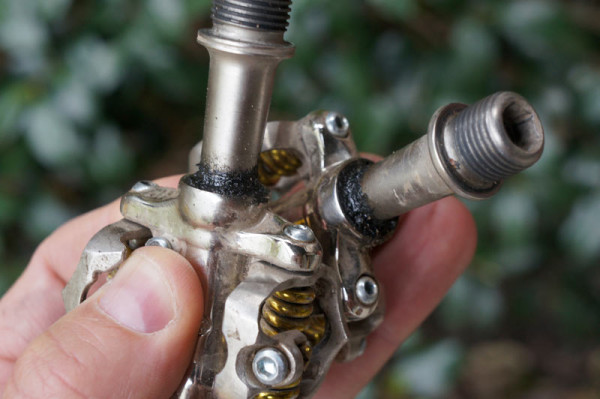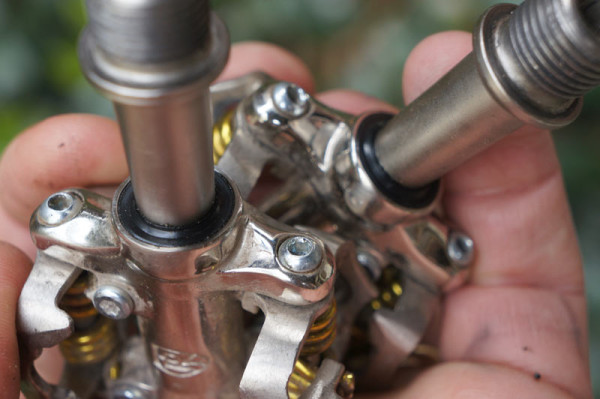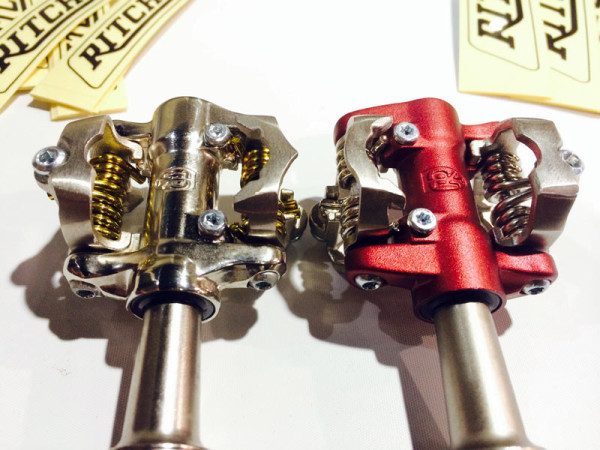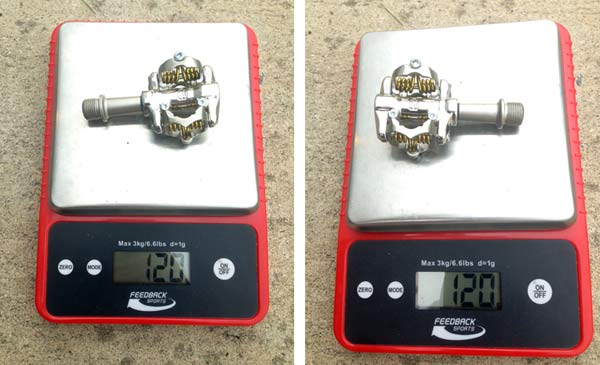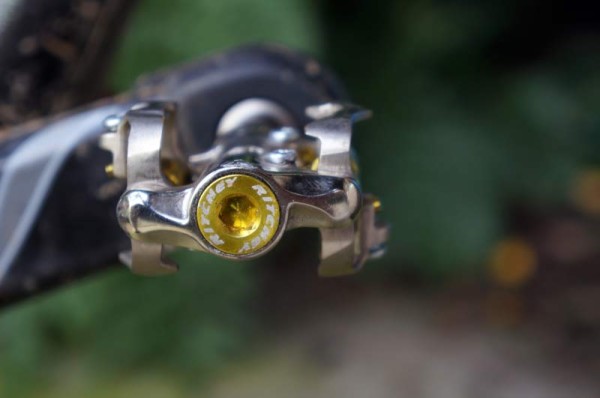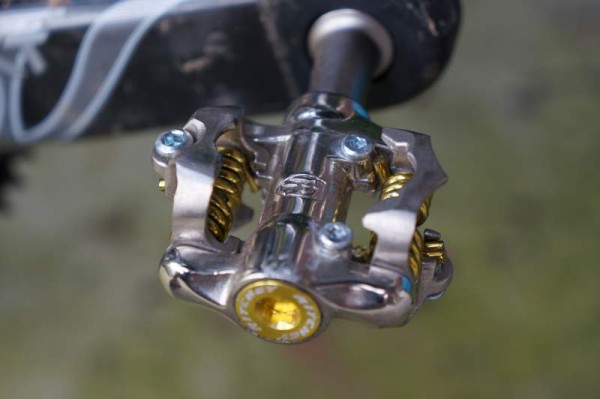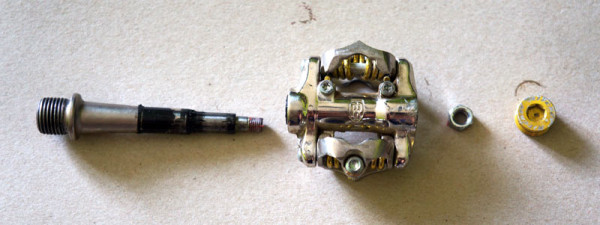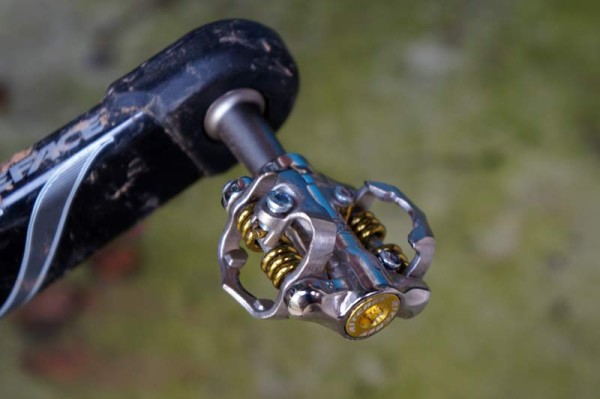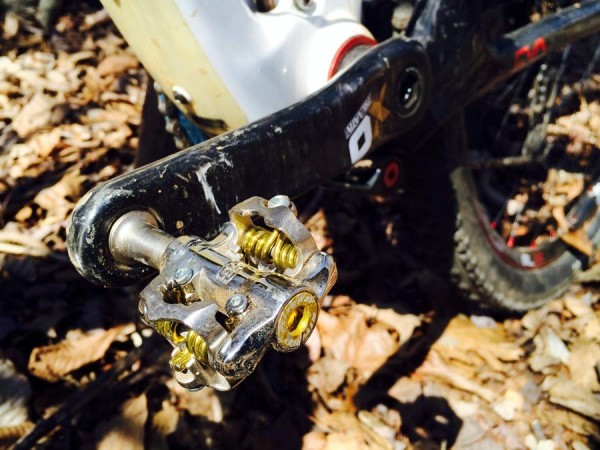With my (very good) Shimano XTR pedals showing their age after a couple years of abuse, I started looking for options. Ritchey’s folks had let me borrow a pair of their Paradigm pedals for a ‘cross race once, and with my Shimano cleats they were about 95% awesome. For all intents and purposes, Ritchey’s pedals SPD compatible, but they said for the best performance, I needed to use their cleats.
Challenge. Accepted.
TECH SPECS & ACTUAL WEIGHTS
The Paradigm pedal lineup consists of three options: Comp ($70, 340g), Pro ($140, 255g) and WCS ($160, 225g). Technically, the Comp doesn’t carry the Paradigm moniker, but it uses the same cleats and looks very similar. This is it for Ritchey’s mountain bike pedal family, there are no “trail” pedals or flats.
The pedals look like what we’d expect from Ritchey – a pared down, classic aesthetic whose design is driven primarily by function. You get independently adjustable tension for each side, and the WCS uses a slimmed down forged alloy body on a chromoly axle. No titanium or other fancy bits to drive the price up or shrink rider weight limits (there are none).
They roll on a bushing, needle and cartridge bearing combo that’s proven pretty durable over a half year’s use on both mountain bikes and cyclocross bikes in all manner of crappy, cold, wet, muddy, hot, dry and dusty conditions.
They have small rubber seals that seem to do a great job of keeping the crud out, but do let a bit of grease out, as evidenced by the accumulation of junk just outside the pedal body.
…then they easily wipe clean. They’re still rolling as smooth and quiet as new.
The only difference between the Pro and WCS models is the extra material removal from the chassis and retention clips. The WCS, on left, shaves away excess alloy from the pedal body and retention mechanisms to save a claimed 15g per pedal. They both roll on the same spindle and bearing set up, so (presumably) performance would be similar. Both have 4º of float. The Comp (not shown) uses a cast steel body, standard ball bearings and 5º float.
In actuality, they came in at 240g for the pair, a bit above the 225g claimed weight. Still pretty darn light. You’ve gotta spend a lot of money to chip away at these numbers in any significant way, and then you’re often faced with rider weight limits. For comparison, the new Shimano XTR 9000-series Race pedals are claimed at 310g/pair.
One last feature worth pointing out: Two small screws on the body sit just behind the front cleat retention mechanism. These provide a (replaceable) steel platform for the cleat to rest on, preventing it from rubbing into and wearing away the alloy body.
RIDE REVIEW
In use, the Ritchey’s feel and perform virtually the same as Shimano’s SPD pedals. Which is to say, very good. The overall platform’s a bit smaller since it lacks the side tread supports of Shimano’s, but it never made my foot feel wobbly. If my foot were an airplane, there’s virtually no rotation along the Roll Axis.
I’ve been riding them for almost a year now, moving between two pairs mounted on various mountain and cyclocross bikes. While I didn’t keep track of miles for each specific set, one set in particular has seen the bulk of the miles and traveled with me to more press events. That pair has developed the slightest bit of play – only really noticeable when testing it with my fingers, and not while riding. I’d call it within normal expectations for wear and tear on pedals, and certainly better than some other brands with similar accumulated ride time.
Plus, they’re fully rebuildable. Unscrew the alloy end cap, then a bolt and slide the axle out. The bearings and bushing are all captured inside the pedal body, so simply freshening up the grease is all but foolproof – just note that the non-drive pedal’s end cap threads opposite of normal (righty loosey) and that material is soft enough to strip. Ritchey’s Warranty Manager & Tech Rep Ryan Bontrager says the grease starts out beige but turns gray, so the darkness you see above is perfectly normal. While it was discolored, there was not a hint of dirt, grit, grime or dust inside the pedal, indicating the seals did their job flawlessly.
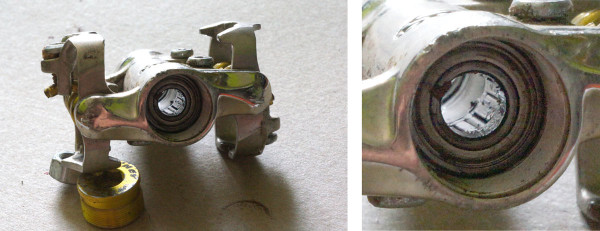
Since they weren’t giving me any problems, I didn’t pull the bearings out, but rebuild instructions and parts are available from Ritchey.
Out of the box, the retention springs are set very, very loose. As in, I could almost pull out of them without twisting my foot – and did come out on a couple bunny hops. After a healthy amount of adjustment screw rotations all around, they were much better. There’s a wide range of adjustment, making them good for beginners all the way up to seasoned racers.
The wide open design kept them from clogging up, even during muddy rides. For cyclocross, the platform was always big enough to catch my foot when remounting the bike. The pedal height is minimal, too, putting your foot as close to the spindle as it can without sacrificing durability. And that’s the real bonus of these pedals, that they can combine a respectably lightweight design with both solid performance and great reliability. And they do all that at very reasonable price points. Win. Win. Win. I highly recommend them to anyone sold on the SPD style pedal but looking for lighter options.
